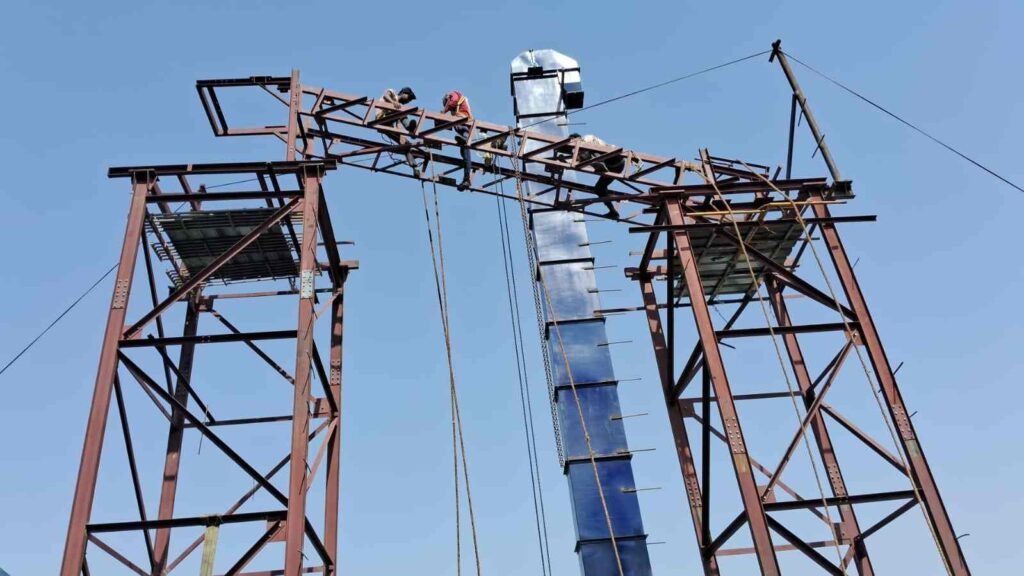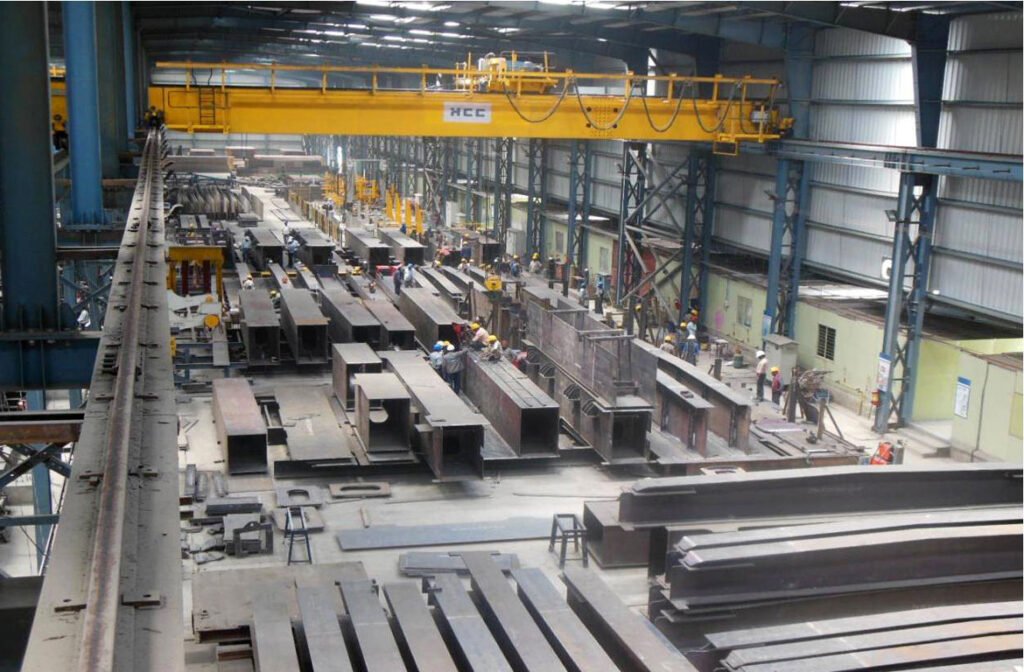Fabrication and Erection: Key Components in Construction and Engineering Projects


Fabrication and erection are crucial stages in the construction and manufacturing industries, particularly in the assembly of complex structures, heavy machinery, and industrial plants. These two processes play a vital role in ensuring that components are built, assembled, and installed accurately, efficiently, and safely. Whether in the construction of bridges, steel buildings, or oil and gas plants, fabrication and erection serve as the foundation for the physical realization of any project.
This article delves into the processes, significance, and challenges of fabrication and erection, along with the role they play in various industries.
What is Fabrication?
Fabrication refers to the process of creating components or parts from raw materials, typically metals, through cutting, shaping, assembling, and finishing. It is a manufacturing process that converts raw material into a final product or a semi-finished component that will be used in larger assemblies. Fabrication includes a variety of processes such as:
– Cutting: Using methods like laser cutting, waterjet cutting, or plasma cutting to slice raw materials into desired shapes or sizes.
– Bending: Using machines like press brakes to bend metal or other materials into the required angles and shapes.
– Welding: The process of joining metals through heat, pressure, or a combination of both to form a strong bond.
– Machining: Using precision tools to shape, drill, or finish metal parts to meet exact specifications.
– Assembly: Combining fabricated parts into larger structures or sub-assemblies that are then ready for installation.
The goal of fabrication is to produce components that meet the technical specifications and quality standards required for the next phase of construction or assembly.
What is Erection?
Erection refers to the on-site assembly, installation, and positioning of fabricated components to form the final structure. This phase is where the fabricated parts are transported to the construction site, and the assembly process begins, often using cranes, scaffolding, and other heavy equipment. The key stages of erection include:
– Transporting Fabricated Parts: After fabrication, the parts are transported to the construction site. Depending on the size of the components, transportation may involve trucks, rail, ships, or even helicopters.
– Assembly and Installation: The fabricated parts are positioned and assembled on-site to form the desired structure. This can involve bolting, welding, or other methods to secure the components together.
– Quality Control: As the structure is assembled, quality checks are conducted to ensure that the components align properly and meet safety and design standards.
– Finishing: After the primary structure is erected, additional tasks such as painting, coating, or other finishing touches may be required to protect the structure and enhance its appearance.
Erection requires a high degree of planning, coordination, and safety measures, as it often involves large-scale machinery, heavy lifting, and working at significant heights.
Importance of Fabrication and Erection in Various Industries
Both fabrication and erection play a central role in various industries that rely on large-scale infrastructure, machinery, and heavy equipment. Some of the primary sectors where these processes are crucial include:
1. Construction Industry
The construction of commercial and residential buildings, bridges, tunnels, and other infrastructure projects involves extensive fabrication and erection work. Steel and concrete structures, for example, require precise fabrication of beams, columns, and trusses that are then transported to the site for assembly and installation.
– Fabrication: Steel beams, columns, and frames are fabricated in controlled environments, ensuring the correct dimensions and strength.
– Erection: Large cranes and lifting equipment are used to position and secure the steel components at height, requiring careful planning and coordination.
2. Oil and Gas Industry
The oil and gas sector, including offshore platforms and refineries, requires the fabrication of complex piping systems, tanks, and heavy structural elements. These parts must be fabricated to withstand harsh environmental conditions, such as extreme temperatures and pressures.
– Fabrication: Fabrication of pressure vessels, pipelines, and structural components is carried out in specialized facilities, often following strict international codes and standards.
– Erection: On-site erection of these heavy structures requires the use of cranes, scaffolding, and safety measures due to the complexity and scale of the installations.
3. Power Plants
Power generation plants, including thermal, nuclear, and renewable energy facilities, require the fabrication of large metal components, including boilers, turbines, and cooling towers. Erection on-site can be challenging due to the scale and complexity of the systems being installed.
– Fabrication: Fabrication involves creating parts for steam turbines, pressure vessels, and cooling systems, often in specialized workshops.
– Erection: These parts are then transported and assembled on-site using large cranes and equipment, sometimes requiring months of careful coordination.
4. Heavy Manufacturing and Industrial Plants
Fabrication and erection processes are vital in the construction of industrial plants, such as chemical processing plants, cement factories, and automobile manufacturing facilities. The erection of complex machinery and assembly lines requires highly skilled workers and a well-planned approach.
– Fabrication: Heavy machinery and equipment components are fabricated in advanced workshops and factories.
– Erection: The installation of machinery and systems at the manufacturing site involves precise placement, alignment, and integration of complex parts.
Key Challenges in Fabrication and Erection
While fabrication and erection are essential to the successful completion of many industrial projects, they also come with challenges that must be addressed during the planning, execution, and completion phases:
1. Design Accuracy and Quality Control
Both fabrication and erection processes must adhere to strict design specifications. Any errors in the fabrication phase can lead to issues during erection, including misalignment or the need for rework. Ensuring accuracy in the design, fabrication, and assembly is vital to prevent delays and extra costs.
– Solution: The use of advanced design software, 3D modeling, and quality control checks during fabrication can help identify and mitigate errors early on.
2. Safety Concerns
Erection, particularly the installation of heavy and large components at significant heights, involves inherent safety risks. Workers are exposed to dangers such as falling, equipment malfunctions, and accidents during lifting operations.
– Solution: Strict safety standards, training programs, and the use of protective gear and equipment are necessary to safeguard workers during the erection process.
3. Coordination and Logistics
The transportation of large, heavy, and sometimes delicate fabricated parts to the erection site can be complex, especially when dealing with parts that need to be moved over long distances or through difficult terrain.
– Solution: Careful logistical planning, including timing, route selection, and the use of appropriate transport vehicles, ensures smooth transportation and prevents damage to parts.
4. Environmental Conditions
Weather and environmental conditions can affect both fabrication and erection. Heavy rain, high winds, or extreme temperatures can delay the erection process or complicate the fabrication of materials.
– Solution: Scheduling erection activities during favorable weather conditions, along with the use of protective coverings and climate-controlled fabrication environments, can mitigate these challenges.
The Role of Technology in Fabrication and Erection
Advancements in technology have revolutionized both fabrication and erection, increasing the speed, accuracy, and safety of these processes. Some key technological advancements include:
– Computer-Aided Design (CAD) and Computer-Aided Manufacturing (CAM): These technologies allow for more precise design and fabrication of components, reducing errors and improving efficiency.
– Robotics and Automation: Automated fabrication processes and robotic systems for welding, cutting, and assembly have improved consistency and speed.
– Drones and Augmented Reality (AR): Drones are used for aerial surveys and inspection during the erection process, while AR tools help workers visualize assembly processes on-site, improving accuracy and reducing rework.
Conclusion : Fabrication and erection are integral to the successful completion of complex construction and manufacturing projects. From the creation of individual components to the assembly of massive structures, these processes require skilled labor, careful planning, and the use of advanced technologies. The construction, oil and gas, power, and manufacturing industries all rely on these phases to bring designs to life and ensure the creation of durable, safe, and functional infrastructure. As industries continue to grow and evolve, so too will the methods and technologies that drive fabrication and erection, making these processes even more efficient, safe, and sustainable.

